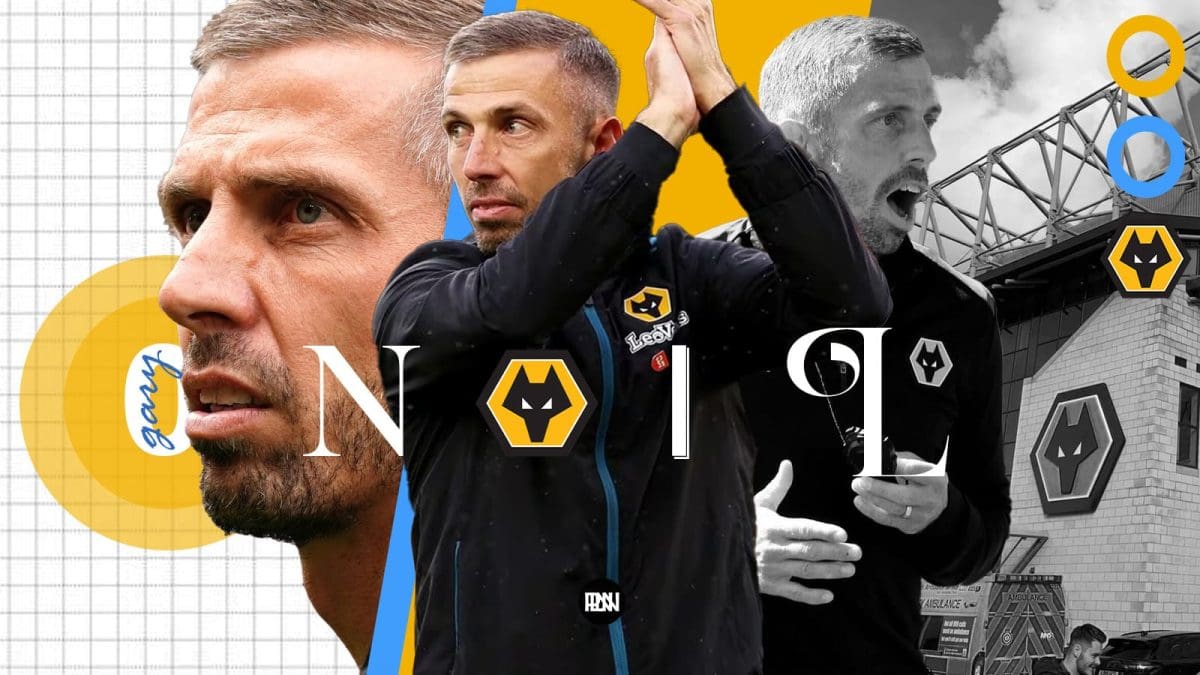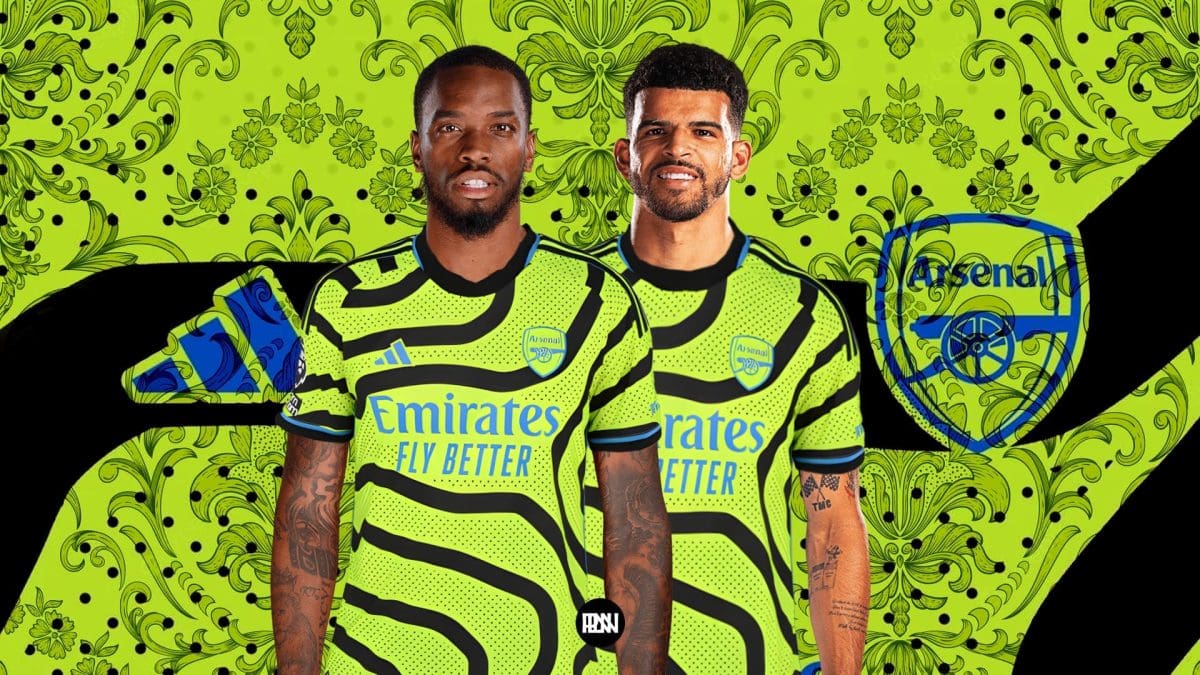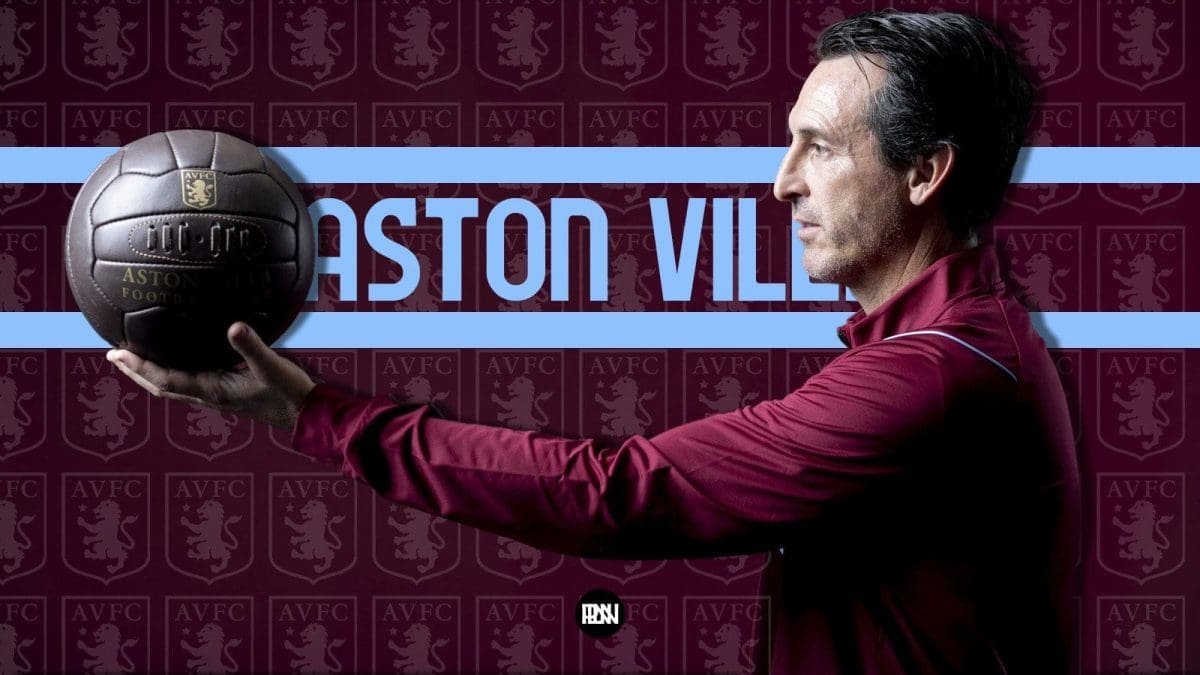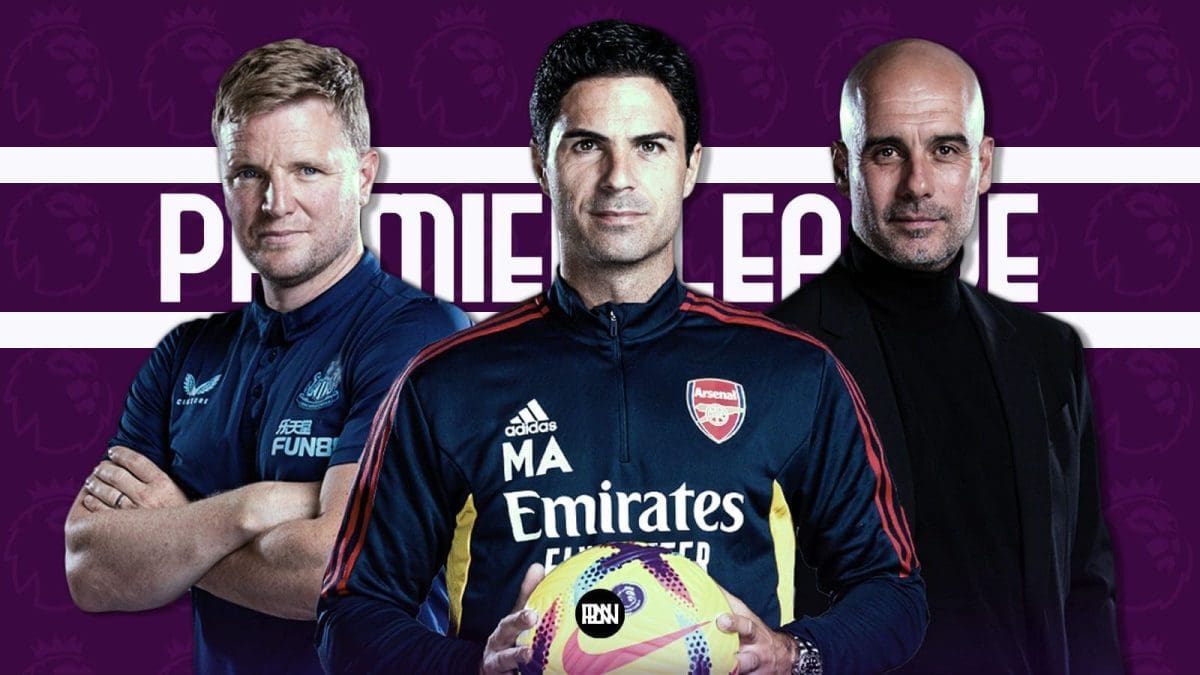When Gary O’Neil took over as Wolves’ manager after Julen Lopetegui left in August, few expected him to last. Fast forward four months, and Wolverhampton Wanderers sits comfortably in mid-table under O’Neil’s stewardship. His sharp tactical innovations on the training ground are being translated onto the pitch by the players. In this article, we will try to analyze and explain the exclusive training footage of Wolves and what Gary O’Neil said about his tactics on Sky Sports’ Special Monday Night Football.
Gary O’Neil – Early Career
Gary O’Neil enjoyed a distinguished playing career spanning over 15 years primarily with clubs in England. An adept central midfielder, O’Neil came up through the youth system at Portsmouth before making over 200 Premier League appearances with the likes of Middlesbrough, West Ham United, and Queens Park Rangers. He was regarded for his work rate, passing ability, and leadership on the pitch. Though not an elite goal scorer from midfield, he chipped in 28 career league goals.
“My brain would help me with after football, as in turning to coaching… my biggest asset as a player was being tactically aware”
Gary O’Neil describes his playing days pic.twitter.com/aSsF6LSdgg
— Sky Sports Premier League (@SkySportsPL) October 23, 2023
He was appointed as Wolves’ head coach ahead of the 2023/24 Premier League campaign, marking the club’s sixth successive season in the top flight. O’Neil’s coaching career began at Liverpool’s under-23s in 2020, before joining the staff at AFC Bournemouth in 2021. He played a significant role in the club’s promotion under Scott Parker and later became the manager of Bournemouth, gaining recognition for improving performances and maintaining the club’s Premier League status.
At 40 years of age, O’Neil became Wolves’ youngest manager of this Millennium and the first permanent British coach to lead the club in six years. His coaching philosophy is methodical and tactically versatile, and he has been praised for his ability to develop and implement effective session plans and training.
The Diagonal Four v Three
One of Gary O’Neil’s key tactics is the diagonal four-v-three approach, which he used to great effect against Bournemouth. By analyzing exclusive training footage, O’Neil demonstrated how Wolves exploited the spaces behind Bournemouth’s midfield. During the international break, Gary O’Neil prepared his team by using players in bibs to represent Bournemouth’s midfielders. This visual aid helped the Wolves players understand their targets and the areas they needed to exploit.
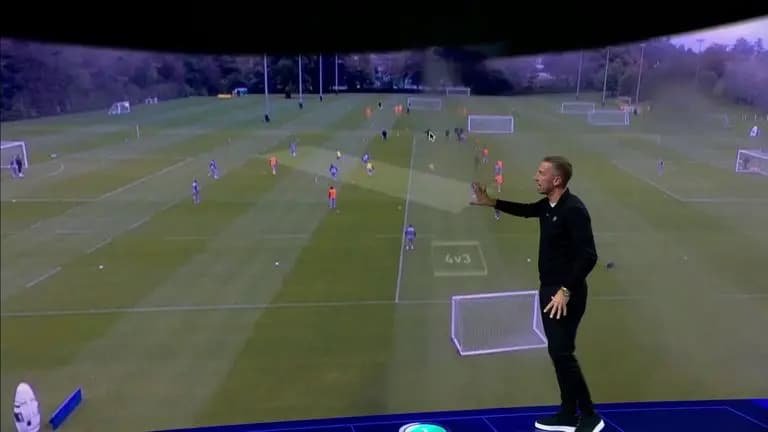
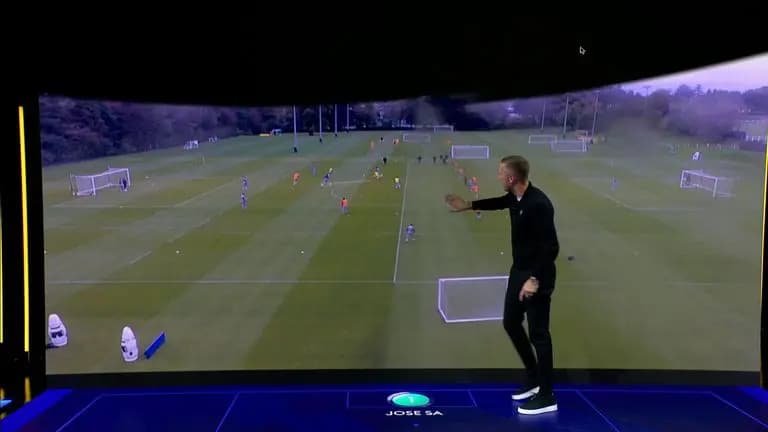
The movement of Wolves’ central midfielders caused a dilemma for the player at the base of Bournemouth’s midfield. As Wolves’ first pivot moved outside, it freed up the second pivot, leaving the Bournemouth player with a difficult decision. If he closed down Wolves’ spare man, space would open up for Wolves’ attacking players in the pocket. This tactical preparation led to Wolves’ successful comeback against Bournemouth.
The Importance of Tactical Preparation
Gary O’Neil emphasized the significance of early success in implementing tactical strategies. By achieving success early in the game, the players gain confidence and start to recognize the patterns they have worked on in training. O’Neil highlighted a clip showing Wolves replicating their training routine in the opening minutes of the match. This familiarity with the tactics allowed Wolves to create dangerous situations and eventually score goals.

Another example of Wolves’ tactical preparation was their winning goal against Bournemouth. O’Neil explained how Wolves capitalized on Bournemouth goalkeeper Neto’s decision to release an early pass, leading to a turnover of possession. O’Neil highlighted the importance of pressing Bournemouth high, taking advantage of their tendency to turn over the ball in certain areas of the pitch. Wolves’ winning goal showcased the quality and composure of their players, resulting in a fantastic team goal.
Contain and Counter: Overcoming Man City
Facing Manchester City required a different tactical approach from Wolves. O’Neil emphasized the importance of reinforcing one side of the pitch, staying compact, and utilizing the counter-attack. Wolves kept an extra man on the right side of the pitch to neutralize the threat posed by Erling Haaland, who tends to operate on that side. This tactic allowed Wolves to focus their defensive efforts and provide cover for their wing-backs.
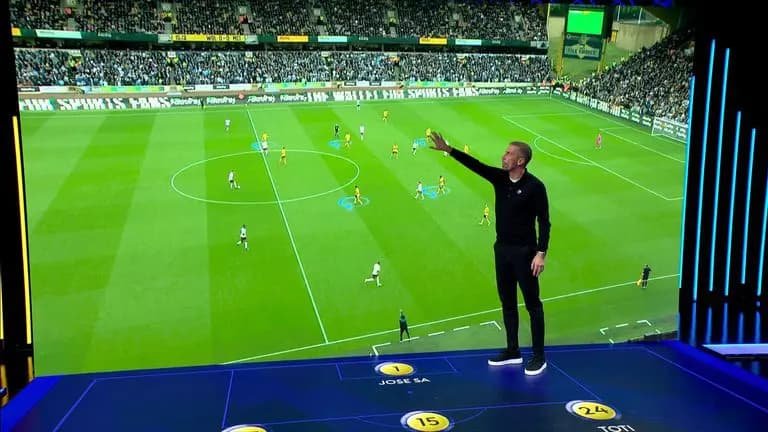
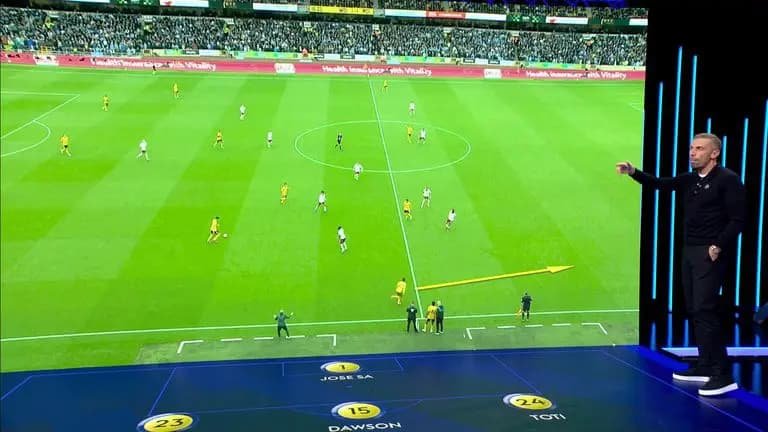
O’Neil emphasized the importance of reducing the spaces behind Wolves’ defensive line, where Manchester City would try to find the spare man. Wolves aimed to win the ball back aggressively and launch quick counter-attacks, utilizing the pace and quality of their players like Pedro Neto. The disciplined performance of Matheus Cunha was crucial in pressurizing Man City’s midfielders and limiting their ability to create scoring opportunities.
The Importance of Defensive Organization
Defensive organization was a key aspect of Wolves’ success against Manchester City. O’Neil demonstrated the advantage of having an extra man on the side where City’s dangerous winger, Jeremy Doku, operated. This extra support from the midfielder ensured that Doku was not left in a one-v-one situation for too long. By maintaining defensive compactness, Wolves were able to neutralize City’s attacking threats effectively.
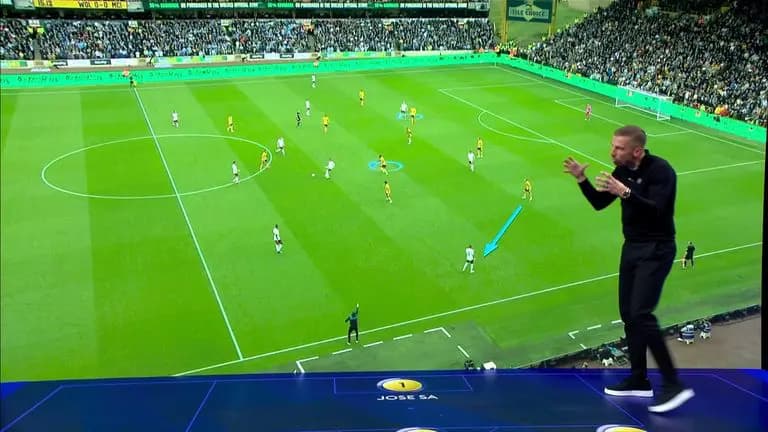
Wolves went man-to-man on their left side
O’Neil also highlighted the importance of trusting experienced defenders like Craig Dawson to go man-for-man with dangerous strikers like Haaland. By positioning Dawson in his strongest area, the penalty box, Wolves minimized the risk of exposing his lack of pace in open spaces. This approach, coupled with the disciplined defensive performances of the entire team, prevented Haaland from making a significant impact in the game.
Repetition and Pattern Recognition
The players clearly understand O’Neil’s tactical plans from focused repetitions in training. Before matches, Wolves rehearses movements and in-game scenarios they expect to encounter. This builds familiarity and pattern recognition, so when certain triggers occur in matches, players instinctively react having rehearsed those situations.
Fantastic to see
In a heartwarming display of respect, Gary O’Neil praises his players during the post-match team talk after a heroic late surge secured all three points against Spurs! ⚽️ pic.twitter.com/CQX2C7oQdg
— Football on TNT Sports (@footballontnt) November 12, 2023
Seeing their tactical plans bear fruit builds trust between O’Neil and the players. This is crucial for players to fully commit to a manager’s ideas. O’Neil also ensures different tactical plans are adapted to each opponent, so players feel thoroughly prepared to exploit the various weaknesses they will encounter.
Adaptable Shape-Shifting Mid-Game
While O’Neil enters games with clear tactical plans, he is quick to identify when initial approaches are not working. Rather than persisting rigidly, O’Neil shows an ability to tweak shapes and personnel mid-game to swing momentum back in Wolves’ favour.
“A big key to me is being adaptable and flexible”
Gary O’Neil on how he approached Wolves’ match against Man City pic.twitter.com/vuMhrwQkvd
— Sky Sports Premier League (@SkySportsPL) October 23, 2023
His substitutions have been particularly effective, as fresh legs and different skillsets allow Wolves to transition between various formations depending on game states. Having worked on different systems in training, the players have shown cohesion shifting from a 4-3-3, to a midfield diamond, or even three at the back.
Conclusion
Gary O’Neil’s tactical brilliance has played a pivotal role in Wolves’ recent successes. His ability to analyze opponents, devise innovative training methods, and implement effective tactics has transformed Wolves into a formidable team. As Wolves continue to progress under O’Neil’s guidance, their opponents will need to be prepared for the tactical challenges they present.


